
Paul Frederic Simon is an American singer-songwriter and actor. Simon's musical career has spanned seven decades with his fame and commercial success beginning as half of the duo Simon & Garfunkel, formed in 1956 with Art Garfunkel. Simon was responsible for writing nearly all of the pair's songs including three that reached number one on the U.S. singles charts: "The Sound of Silence", "Mrs. Robinson", and "Bridge over Troubled Water".
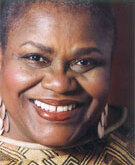
Bernice Johnson Reagon is a song leader, composer, scholar, and social activist, who in the early 1960s was a founding member of the Student Non-violent Coordinating Committee's (SNCC) Freedom Singers in the Albany Movement. in Georgia. In 1973, she founded the all-black female a cappella ensemble Sweet Honey in the Rock, based in Washington, D.C. Reagon, along with other members of the SNCC Freedom Singers, realized the power of collective singing to unify the disparate groups who began to work together in the 1964 Freedom Summer protests in the South.
“After a song,” Reagon recalled, “the differences between us were not so great. Somehow, making a song required an expression of that which was common to us all.... This music was like an instrument, like holding a tool in your hand.”
"Lift Ev'ry Voice and Sing" – often referred to as the "Negro national hymn" – is a song written as a poem by James Weldon Johnson (1871–1938) in 1900 and set to music by his brother John Rosamond Johnson (1873–1954) in 1905.
Ralph Appelbaum Associates (RAA) is one of the world's largest museum exhibition design firms. It has offices in New York City, London, Beijing, Berlin, Moscow, and Dubai.
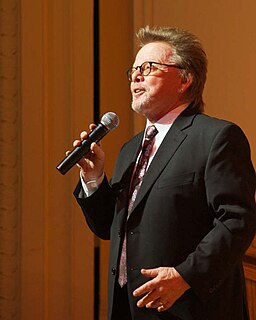
Paul Hamilton Williams Jr. is an American composer, singer, songwriter and actor. He is known for writing popular songs performed by a number of acts in the 1970s, including Three Dog Night's "An Old Fashioned Love Song" and "Out in the Country," Helen Reddy's "You and Me Against the World," David Bowie's "Fill Your Heart" and the Carpenters' "We've Only Just Begun" and "Rainy Days and Mondays." Williams is also known for his musical contributions to films, including the Academy Award-nominated song "Rainbow Connection" from The Muppet Movie, and penning the lyrics to the #1 chart-topping song "Evergreen," the love theme from the Barbra Streisand vehicle A Star Is Born, for which he won a Grammy for Song of the Year and an Academy Award for Best Original Song. He wrote the lyrics to the opening theme for the television show The Love Boat, with music previously composed by Charles Fox, which was originally sung by Jack Jones and, later, by Dionne Warwick.

May Frances Aufderheide Kaufman was an American composer of ragtime music. She was probably the best known among female ragtime composers. She received training in art music and visited Europe on a grand tour, yet decided to compose in ragtime.
Mike Seeger was an American folk musician and folklorist. He was a distinctive singer and an accomplished musician who played autoharp, banjo, fiddle, dulcimer, guitar, mouth harp, mandolin, dobro, jaw harp, and pan pipes. Seeger, a half-brother of Pete Seeger, produced more than 30 documentary recordings, and performed in more than 40 other recordings. He desired to make known the caretakers of culture that inspired and taught him.

"It Wasn't God Who Made Honky Tonk Angels" is a 1952 country song written by J. D. "Jay" Miller, and originally recorded by Kitty Wells. It was an answer song to the Hank Thompson hit "The Wild Side of Life."
"The Titanic" is a folk song and children's song. "The Titanic" is about the sinking of RMS Titanic which sank on April 15, 1912 after striking an iceberg.
Luke Temple is an American pop-folk singer-songwriter. He records under his own name and with New York-based band Here We Go Magic.

Who Killed the Electric Car? is a 2006 documentary film that explores the creation, limited commercialization, and subsequent destruction of the battery electric vehicle in the United States, specifically the General Motors EV1 of the mid-1990s. The film explores the roles of automobile manufacturers, the oil industry, the federal government of the United States, the California government, batteries, hydrogen vehicles, and consumers in limiting the development and adoption of this technology.
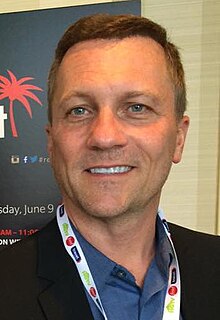
Todd Thicke is an Emmy and Gemini Award-nominated television writer and producer most known for his work as the executive producer and head writer of America’s Funniest Home Videos since the show’s premiere in 1989. In 2009, Thicke's original pilot script for AFV was added to the Smithsonian’s National Museum of American History collection. It is now permanently displayed in Washington.

Amy Kuney, known professionally as AMES, is an American singer, songwriter, and musician based in Los Angeles, California.

The tradition of protest songs in the United States is a long one that dates back to the 18th century and colonial period, the American Revolutionary War and its aftermath. In the 19th century topical subjects for protest in song included abolition, slavery, poverty, and the Civil War amongst other subjects. In the 20th century civil liberties, civil rights, women's rights, economic injustice, politics and war were among the popular subjects for protest in song. In the 21st century the long tradition continues.

"You're Amazing" is a song by English vocalist Robert Palmer, released in 1990 as the second single from his tenth studio album Don't Explain. It was written by Steven Fellows, Alan Mansfield, Palmer, Guy Pratt and Steve Stevens, and produced by Palmer.

Dream River is the fifteenth studio album by American singer-songwriter Bill Callahan, released on September 17, 2013 on Drag City. Recorded by Erik Wofford, the album is Callahan's fourth to be released under his own name.
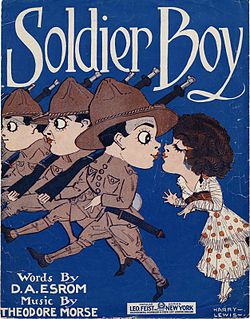
Soldier Boy is a World War I era song released in 1915. D.A. Esrom wrote the lyrics. Theodore Morse composed the music. Leo Feist, Inc. of New York, New York published the song. Artist Harry Lewis designed the cover art for the sheet music. On the cover, there are three cartoon soldiers. One has his head turned to kiss a woman behind him. The song was written for both voice and piano. It is told from the point of view of a woman who is proud of her soldier boy. She addresses the soldier directly in the chorus:

"They All Sang 'Annie Laurie' " is a World War I era song released in 1915. J. Will Callahan wrote the lyrics. F. Henri Klickmann composed the music. The song was published by Frank K. Root & Co. of Chicago, Illinois. On the cover of the sheet music is a group of soldiers singing around a camp fire. The image of a woman can be seen forming in the smoke. The song was written for voice and piano.
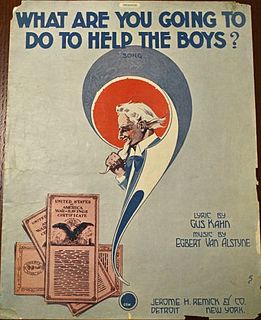
"What Are You Going to Do to Help the Boys?" is a World War I era song released in 1918. Gus Kahn wrote the lyrics. Egbert Van Alstyne composed the music. It was published by Jerome H. Remick & Co. of Detroit, Michigan. Artist E.E. Walton designed the sheet music cover. It features Uncle Sam inside a red, white, and blue question mark. He is holding his beard and looking down at liberty bonds. To the left of this image it reads, "Buy a Liberty Bond!" on some editions. The song was written for both piano and voice.
















